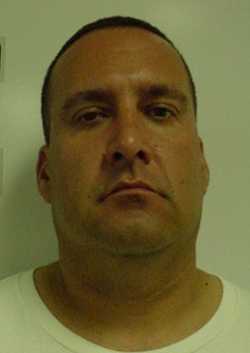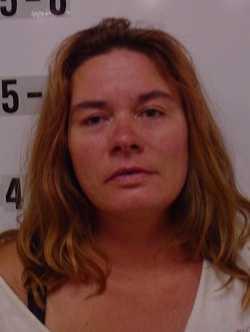- Tom Philpott
- Posted On
Military Update: New TRICARE fees, end to combat pay
The vote ensures that TRICARE Prime enrollment fees for individual retirees under age 65 will be raised in the new fiscal year by $30, to $260 a year, and that retiree family coverage will climb by $60, to $520. These will be the first fee increases since TRICARE rates were set in 1995.
The Senate panel also joined with the House to endorse an Obama administration plan to restructure TRICARE pharmacy co-payments to encourage use of mail order for refills instead of having local drugstores, at far greater cost to the government, refill prescriptions for chronic conditions.
Through TRICARE “home delivery,” patients get a 90-day supply of pills versus a 30-day supply from retail outlets. Defense officials intend to make mail order more attractive by ending a $3 charge for generic drugs and raising the co-pay for generic medicines at retail outlets to $5, up from $3.
Co-pays for brand name drugs on the military formulary would stay at $9 by mail but climb to $12 at retail pharmacies. For non-formulary brand drugs, the $22 co-pay would climb to $25 for mail order and retail. The new co-pays are projected to save $2.6 billion over five years, or five times the savings projected from higher TRICARE Prime fees on working age retirees.
The Senate committee also voted with the House to support a 1.6 percent military pay increase next January, enough to ensure that pay keeps pace with private sector wage growth.
But the Senate committee parted ways with the House version of the fiscal 2012 defense authorization bill on a number of other personnel issues.
Here’s a rundown of some key differences that will have to be reconciled before Congress can pass a final defense authorization bill later this year:
Combat pay windfall
Only the Senate bill would require the services to begin to prorate monthly imminent danger pay and hostile fire pay of $225 a month based on number of days in designated danger areas. Under current law, spending only part of a day in a war zone or imminent danger area makes a member eligible for the full $225 payment.
Amid the looming debt crisis, and congressional leaders searching for ways to lower federal spending, senators decided to address perceived combat pay windfalls to save $30 million a year. The main targets are persons on temporary assignments. Flight crews, for example, can spend only hours in Afghanistan and get a full month of danger pay.
The committee also received reports of military personnel attending first-of-the-month change of command ceremonies in war zones and, by arriving a day early and departing immediately after the ceremony, qualifying for two months of danger pay.
Members on full deployments also would be impacted by this change. Currently, if a member on a yearlong, wartime deployment arrives mid-month and, a year later, departs mid-month, he or she qualifies for a total of 13 months of danger pay. If the prorated formula becomes law, total payments would reflect the actual length of deployment, ending the extra month of danger pay so many members now receive.
Special survivor indemnity allowance
The Senate bill is silent on a House-passed provision that would ease further a reduction in Survivor Benefit Plan payments felt by 57,000 surviving military spouses.
Spouses of these survivors either have died on active duty or, in retirement from a service-connected injury or ailment. As a result they qualify for tax-free Dependency and Indemnity Compensation (DIC) from VA. But to accept DIC they must forfeit an equal amount of taxable SBP.
To ease this so-called “widow’s tax,” Congress four years ago authorized a Special Survivor Indemnity Allowance (SSIA) valued now at $70 a month and rising by $10 a year until it hits $100 by 2014. The House version of this year’s defense bill would raise SSIA higher and extend its life so that by fiscal 2017 payments would reach $314 a month.
The House was able to pay for this $150 million SSIA initiative in part by accepting the administration’s plan to curb costs linked to the Uniformed Services Family Health Plan, a managed care plan for military beneficiaries living in six areas of the U.S. near former Public Health Service hospitals.
The Senate bill also would curb costs under USFHP, as we describe below. But rather than use the dollars saved to expand SSIA, senators choose to beef up incentives available to downsize the force.
Force Shaping Tools – The Senate bill would give the services three new or extended authorities to downsize forces.
One new tool would be a “voluntary retirement payment” which could be offered to certain officers with between 20 and 29 years of service if they agree to retiree. The payment could equal up to 12 times an officer’s monthly basic pay. This could be used as an alternative to an early retirement board.
The Senate bill also would extend the Voluntary Separation Incentive (VSI) authority that was set to expire. VIS is an annuity used extensively during the Post-Cold War drawdown to entice members to leave service.
A third initiative would expand from three months to a full year the period service prior to expiration of an enlistment contract that member could be discharged without a loss of benefits such as the GI Bill. The change would apply only to benefits, not pay or allowances.
USFHP and Medicare
Both the Senate and House would require individuals newly enrolled in the Uniformed Services Family Health Plan to transition to TRICARE for Life, and out of USFHP, as they become Medicare eligible due to age.
But only the Senate bill praises the USFHP model and directs Defense officials to work with USFHP and Medicare to develop and evaluate health plan alternatives for TRICARE for Life beneficiaries so they can get integrated health care management like that being delivered to elderly through USFHP.
To comment, e-mail This email address is being protected from spambots. You need JavaScript enabled to view it., write to Military Update, P.O. Box 231111, Centreville, VA, 20120-1111 or visit: www.militaryupdate.com.
Follow Lake County News on Twitter at http://twitter.com/LakeCoNews, on Tumblr at www.lakeconews.tumblr.com, on Facebook at http://www.facebook.com/pages/Lake-County-News/143156775604?ref=mf and on YouTube at http://www.youtube.com/user/LakeCoNews.

 How to resolve AdBlock issue?
How to resolve AdBlock issue? 







